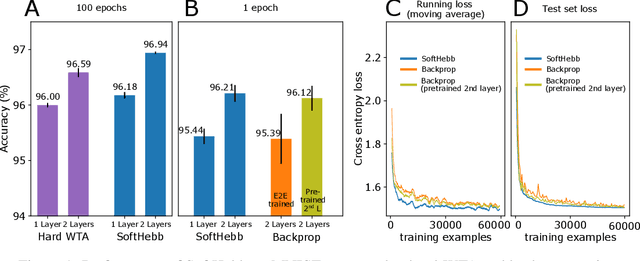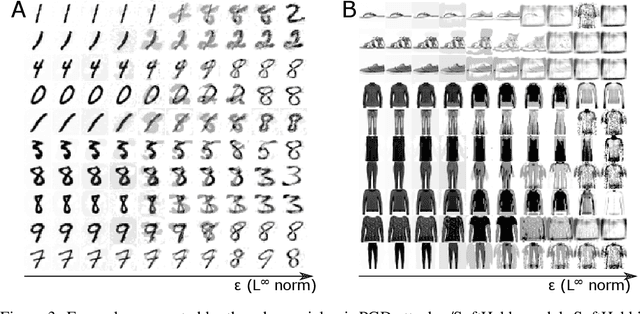Dmitry Toichkin
SoftHebb: Bayesian inference in unsupervised Hebbian soft winner-take-all networks
Jul 12, 2021


Abstract:State-of-the-art artificial neural networks (ANNs) require labelled data or feedback between layers, are often biologically implausible, and are vulnerable to adversarial attacks that humans are not susceptible to. On the other hand, Hebbian learning in winner-take-all (WTA) networks, is unsupervised, feed-forward, and biologically plausible. However, an objective optimization theory for WTA networks has been missing, except under very limiting assumptions. Here we derive formally such a theory, based on biologically plausible but generic ANN elements. Through Hebbian learning, network parameters maintain a Bayesian generative model of the data. There is no supervisory loss function, but the network does minimize cross-entropy between its activations and the input distribution. The key is a "soft" WTA where there is no absolute "hard" winner neuron, and a specific type of Hebbian-like plasticity of weights and biases. We confirm our theory in practice, where, in handwritten digit (MNIST) recognition, our Hebbian algorithm, SoftHebb, minimizes cross-entropy without having access to it, and outperforms the more frequently used, hard-WTA-based method. Strikingly, it even outperforms supervised end-to-end backpropagation, under certain conditions. Specifically, in a two-layered network, SoftHebb outperforms backpropagation when the training dataset is only presented once, when the testing data is noisy, and under gradient-based adversarial attacks. Adversarial attacks that confuse SoftHebb are also confusing to the human eye. Finally, the model can generate interpolations of objects from its input distribution.
 Add to Chrome
Add to Chrome Add to Firefox
Add to Firefox Add to Edge
Add to Edge